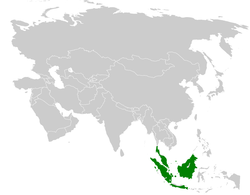| Cream-vented bulbul | |
|---|---|
 | |
| In Panti Forest, Johor, Malaysia | |
| Scientific classification | |
| Kingdom: | Animalia |
| Phylum: | Chordata |
| Class: | Aves |
| Order: | Passeriformes |
| Family: | Pycnonotidae |
| Genus: | Pycnonotus |
| Species: | P. simplex |
| Binomial name | |
| Pycnonotus simplex Lesson, 1839 | |
 | |
The cream-vented bulbul (Pycnonotus simplex) is a member of the bulbul family of passerine birds. It is found in south-eastern Asia from the Malay Peninsula to Borneo. Its natural habitat is subtropical or tropical moist lowland forests. Its breast might sometimes look a little yellow.

